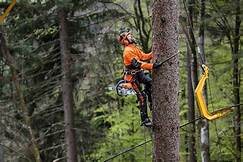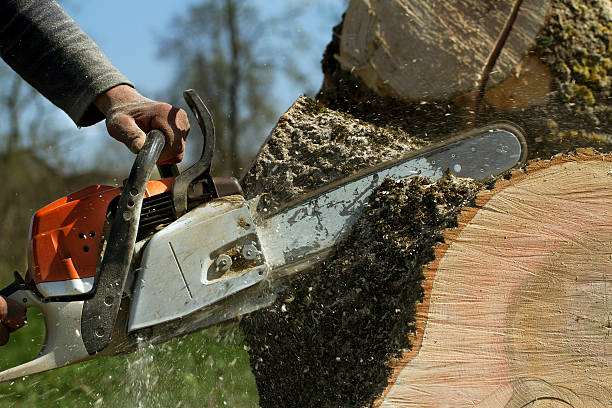Table of Contents
How To Remove A Palm Tree – What You Should Know
Want to know how to remove a palm tree correctly? Removing a palm tree can be a daunting task. There are many things you need to consider before taking down your palm tree. In this blog post, we will discuss the most important factors you need to keep in mind when removing your palm tree and the specialises palm tree removal service which may assist. We will also provide some tips for how to make the process go as smoothly as possible. So if you are thinking about removing your palm tree this year, make sure to read our helpful guide first!

When should you remove a palm tree?
The best time to remove a palm tree is in late winter or early spring, before new growth begins. However, if your palm tree is diseased or dead, it’s best to remove it as soon as possible. Contact a professional arborist for service if you’re not sure how to safely remove your palm tree. An experience arborist can give you an indication of cost and important reason regarding the species and the risk associated with removal in a tropical climate. The Australian Arboriculture association can also be a good source for this information.
How do you remove a palm tree?
There are several ways to remove a palm tree, but the most common method is to use a chainsaw to cut the trunk into small pieces that can be easily removed from the property. Be sure to wear protective gear when removing or cleaning a palm tree, including goggles, gloves, and a dust mask.
What to do with the stump?
If you’re removing a palm tree, you’ll also need to remove the stump. You can use a chainsaw or an axe to chop the stump into small pieces, or you can drill holes in the top of the stump and pour in some herbicide to kill it. Once the stump is dead, you can use a shovel to remove it from the property.
What happens if you cut down a palm tree?
Be sure to check with your local municipality before removing a palm tree, as there may be regulations or permits that are required to carry out this kind of service. And always contact a professional arborist if you’re not sure how to safely remove a palm tree from your property. Another common species you may encounter is a coconut palm tree.
Removing a palm tree can be a big job, and there are a few things you need to keep in mind before getting started:
- -First of all, check the health of the palm tree. If it’s diseased or infested with pests, it’s best to remove it before it causes any further damage.
- -Palm trees can be very heavy, so you’ll need to make sure you have the right tools and equipment for the job.
- -Be aware of any power lines or other obstacles that may be in the way.
- -The root system of a palm tree is very extensive, so it’s important to cut the tree down carefully and completely remove the roots.
- -It’s best to have a professional remove a palm tree, as they will know the safest way to do it and can also advise you on proper disposal.
If you’re thinking about removing a palm tree from your property this year, be sure to consult with a professional arborist first. They’ll be able to tell you what needs to be done and help ensure a safe, successful removal.
Will a palm tree grow back if you cut it down?
A palm tree will not grow back if you cut it down. Palm trees are propagated through cloning or growing from a seed. If you cut the top off of a palm tree, it will not grow back. However, if you cut the trunk of the palm tree, it will not grow back either. To propagate a palm tree, you must clone it or grow from a seed.
How deep do palm tree roots go?
Palm trees can have a wide-ranging root system that can go up to 20 feet deep in some cases. However, on average, palm tree roots usually only go about 8-12 feet deep. This means that if you’re thinking about removing your palm tree, you’ll need to make sure that the stump and roots are completely destroyed so they can’t re-grow.
What happens if you don’t trim palm trees?
The fronds will eventually overgrow a property and block a window or porch, ornaments from view on the front of the house. The weakest branches will break from their supports and drop to the ground on windy days, where they become entangled in strings for clotheslines, electric wires and A/C vents. The tree will become an eyesore.
Most importantly, if the fronds are not trimmed on a regular basis they can harbour insects and rodents that may infest your home. Trimming palm trees is essential for their health just as it is for our homes.
There are two types of trimming: structural and aesthetic. Structural trimming is necessary to maintain the health of the tree and should be done by a professional. Aesthetic trimming is simply for the look of the tree and can be done by anyone.
Before you start trimming your palm trees, it is important to know what type of palm tree you have. There are two types: single trunk and multiple trunk.
What do you do with palm tree trunks?
The best thing you can do with palm tree trunks when they are done is to grind them up and use them as mulch in your gardens.
More than likely, what will happen is the hard core of the trunk will curl over soon after it’s cut off. If you stack two or three together this often allows for convenient transportation. However, if there are a number of palms close together, sometimes it’s more practical to tie a rope around the ends of a number of downed trunks and use a car or truck to transport then intact.
You can also leave them where they land on-site if stacking is difficult. Lastly, you have an option that most people don’t know about: grinding up palm trees once they’ve been cut down. This mulch is great for your garden and you’ll be able to get it for free if you do the work yourself. Just make sure the tree was not treated with any pesticides or other chemicals that may be harmful to plants.
-If you have a number of palm trees close together, sometimes it’s more practical to tie a rope around the ends of a number of downed trunks and use a car or truck to transport then intact.
-Otherwise, you can leave them where they land on-site if stacking is difficult.
-Lastly, you have an option that most people don’t know about: grinding up palm trees once they’ve been cut down. This mulch is great for your garden and you’ll be able to get it for free if you do the work yourself. Just make sure the tree was not treated with any pesticides or other chemicals that may be harmful to plants.
The best thing you can do with palm tree trunks when they are done is to grind them up and use them as mulch in your gardens. More than likely, what will happen is the hard core of the trunk will curl over soon after it’s cut off. If you stack two or three together this often allows for convenient transportation.
However, if there are a number of palms close together, sometimes it’s more practical to tie a rope around the ends of a number of downed trunks and use a car or truck to transport then intact. You can also leave them where they land on-site if stacking is difficult. Lastly, you have an option that most people don’t know about: grinding up palm trees once they’ve been cut down. You may also consider hiring a professional tree arborist and check around for a good price.
How do I stop my palm tree from growing taller?
Palm trees tend to grow taller over time, but there are ways to keep them from reaching their full height. One way is to trim the top of the tree regularly; this will help keep it from growing too tall. You can also plant the tree in a container that’s too small for it, which will also limit its growth.
How do I know when it’s time to remove my palm tree?
Palm trees can last for many years, but there will come a time when they need to be removed. Signs that it might be time to take your palm down include dead fronds at the top of the tree, evidence of rot or fungus, and a general decline in the health of the tree.
Conclusion:
In the article, we have taken a look at how to remove a palm tree. Palm trees are beautiful and provide plenty of shade in the summertime, but they can grow taller than you want them too if left unchecked. We’ve also outlined when it might be time to take your old palm down for good. If you need help removing or trimming a tall palm tree, give us a call! Our team is happy to show you what our professionals can do with these types of projects.


